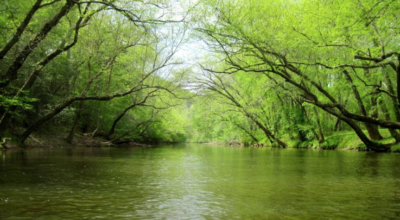Spirit of Rowan 2022: Trading Ford carried travelers across the Yadkin
Published 12:00 am Sunday, March 27, 2022
Before cars zipped over Interstate 85 or the Wil-Cox bridge carried two lanes of U.S. 29, a similar spot was used by travelers to cross the Yadkin River on horseback, wagon or by foot.
That spot, known as Trading F0rd, is roughly in the area where bridges cross the Yadkin River today. Not unlike major highway intersections or interstate exits, civilization found a place near the banks of the Yadkin River at Trading Ford, said Ann Brownlee, who leads the Trading Ford Historic District Preservation Association
Today, there are gas stations and convenience stores at major intersections and interstate exits. Then, there were camps on either side of the river for travelers to dry off or purchase provisions. Roads in the area still follow the general direction of the centuries-old trading path.
Trading Ford’s origins are lost in history, but a history compiled by Brownlee says the Spanish built a fort in the area in 1567, and the journals of early explorers documented the location in 1670, 1674 and 1701. It became a major ford in the Yadkin River as Europeans settled the area.
Brownlee says the first bridge over the Yadkin River in the Salisbury area was the covered Beard Bridge in 1818, just behind former N.C. Finishing Company site. Until then, travelers needed to cross Trading Ford or use a ferry.
Modern bridges over the river are much more recent. The current bridge, which replaced twin spans that opened in the mid 1900s, opened in 2012. The Wil-Cox bridge, today only a pedestrian path, also wasn’t built until the 20th century.
The oldest part of the ford in the river was about a mile downstream from where bridges are today. Brownlee says there are traces of roads used to get to the ford on Duke Energy’s property near the river, with large gullies cut into the land by thousands of wagons passing over it.
Today, Brownlee calls Trading Ford a place time has largely forgotten in the 21st century. That’s due in large part to High Rock Dam’s construction in the 1920s, which flooded low-lying areas at Trading Ford and prevented it from being passable. The islands once used to cross the river, however, can still be seen east of the I-85 bridge.




